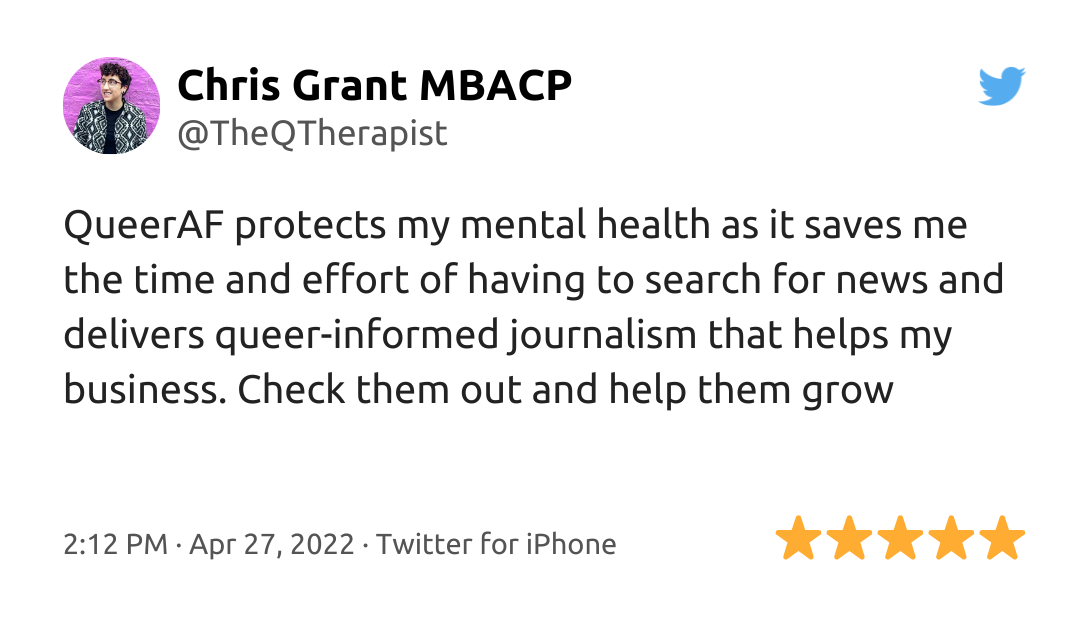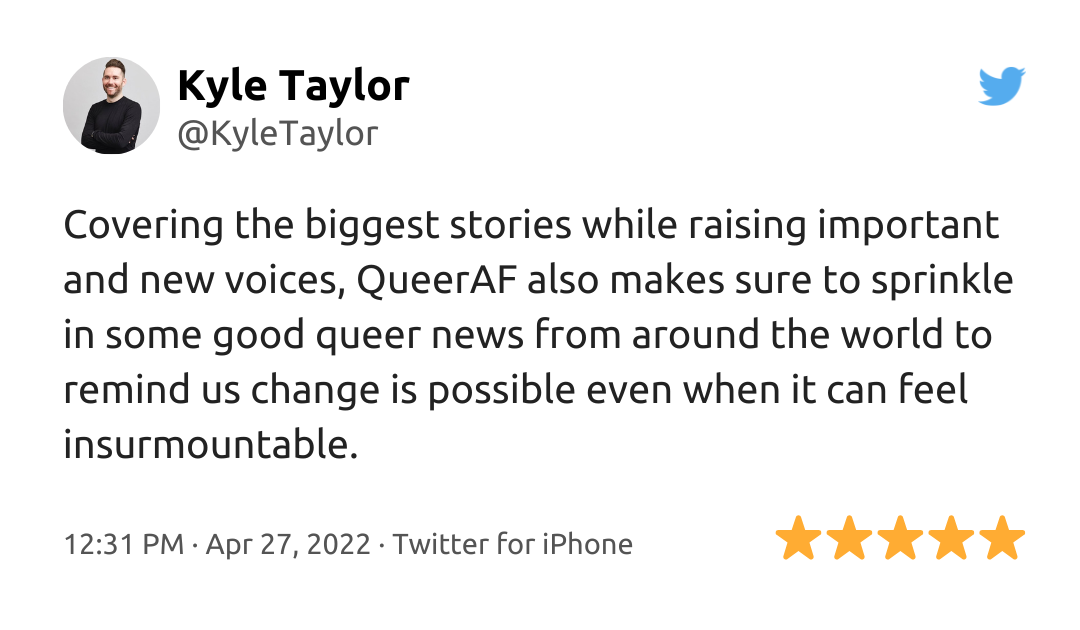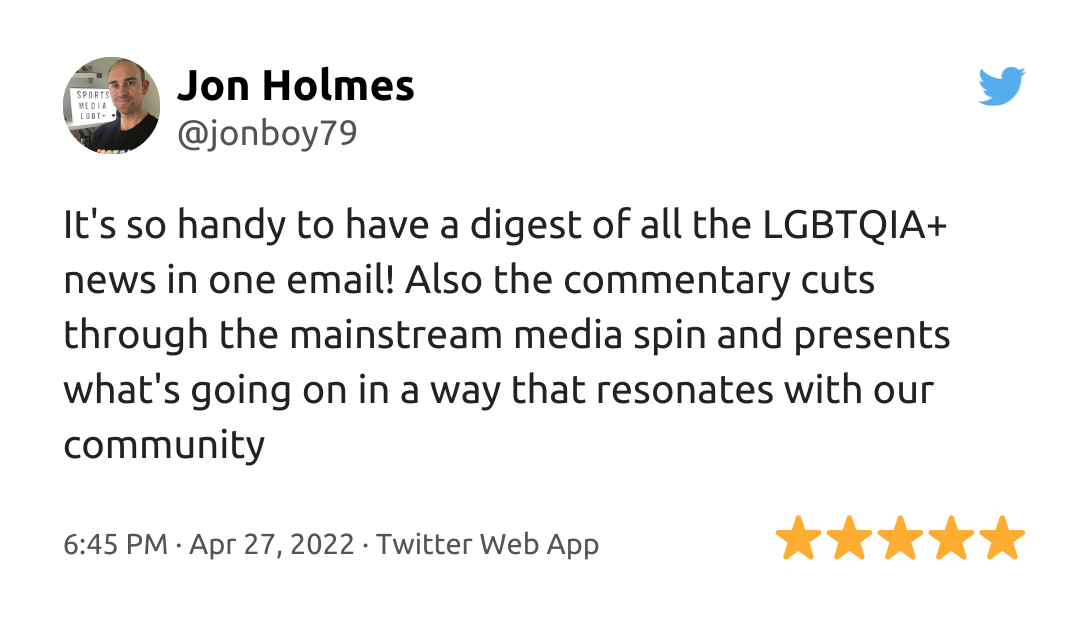
TL;DR: The legal definition of a woman in the UK now excludes trans people after a Supreme Court ruling defined sex as 'biological sex' - sex assigned at birth. The ruling will have a devastating impact on Trans+ rights in the UK, and has already drastically reduced them. Trans people now can't make equal pay claims, and can be excluded from all single-sex spaces under any circumstances.
Today, the UK Supreme Court handed down its decision in the case of For Women Scotland (Ltd) v The Scottish Ministers, ruling that for the purposes of the Equality Act 2010, sex is to be defined exclusively as what it calls ‘biological sex’. This expressly excludes trans people holding a Gender Recognition Certificate from being recognised as their legal sex under the Act.
The Court argued it was necessary to ensure a singular definition of ‘sex’ throughout the Equality Act, which could be interpreted in a “predictable”, “workable”, and “consistently understood” way that could be “applied in practice”.
Considering the Equality Act 2010, the Court concluded that it was necessary to understand ‘sex’ as meaning ‘biological sex’ throughout the legislation.
Although ‘biological sex’ is difficult to define, given the competing and sometimes conflicting components of biology which are often considered to constitute ‘sex’, this did not trouble the Court.
The Court simplistically defines ‘biological sex’ as “the sex of a person at birth”. This means, presumably, sex as initially recorded on one’s birth certificate - a matter of documentation and presumption, rather than actual biology.
It said, “to reach any other conclusion would turn the foundational definition of sex on its head”, and “diminish the protection available to individuals and groups against [sex discrimination]”.
How did the court reach this decision?
The decision opens by pitting two groups against each other - on one hand, all women, and on the other, trans people. This insidious framing sets the tone for a judgment which uncritically relies on anti-trans narratives.
The judgment cites extensively from so-called ‘gender critical’ campaign groups and academics. Not a single trans person was allowed to speak before the Court.
The judgment goes out of its way to give special thanks to Ben Cooper KC - acting on behalf of Sex Matters, who were allowed to intervene in the case - stating that he “gave focus and structure to the argument” that sex should be given its ‘biological meaning’. Cooper has previously acted on behalf of gender critical activists Maya Forstater and Allison Bailey.
At one point, the judgment explicitly refers to a trans woman as ‘a man who identifies as a woman’.
In its analysis of the Equality Act 2010, the Court placed great emphasis on certain provisions, claiming that a definition of sex which included trans people holding a gender recognition certificate would be inconsistent. One element the Court relied on to make this argument was that of pregnancy. The Equality Act 2010 refers frequently to pregnant women, but because trans women cannot get pregnant, but some trans men can, by referring to ‘women’, it says Parliament must have intended ‘woman’ to mean ‘biological female’, as only ‘biological females’ can become pregnant.
The Court also emphasises the idea that to include trans women within women as a class would render it a “heterogenous” grouping, rather than the “distinct” group of biological women and girls with “their shared biology leading to shared disadvantage and discrimination faced by them as a distinct group”.
By rooting misogyny in women’s ‘shared biology’, rather than our shared oppression under patriarchy, the Supreme Court relies on incredibly conservative ideas about gender as a naturalised phenomenon. In reality, trans women experience misogynistic discrimination as much as, if not more than, many other women.
The court also defined what a Lesbian is
Perhaps most concerningly, the Supreme Court adopts extremely transphobic rhetoric concerning transfeminine lesbians.
The Court concludes that a lesbian “must be a [AFAB] female who is sexually oriented towards (or attracted to) [AFAB] females”. The Court concludes that female here cannot include trans women, as the “concept of sexual orientation” would be “rendered meaningless”, and in its opinion, wrongly affect the composition of lesbians as a group.
The Court claims this would lead to an “inevitable loss of autonomy and dignity for lesbians”. It points to evidence from gender-critical groups like the LGB Alliance and The Lesbian Project to make this argument. They claim the inclusion of trans women is having a ‘chilling effect on lesbians’ to associate in lesbian-only spaces. The vast majority of lesbians reject this claim.
It now seems legal in the UK to exclude trans people from single-sex spaces under almost any circumstances
The decision seems to make it lawful to exclude trans people from single-sex spaces, under any circumstances.
Previously, it was thought that to exclude trans people from a single-sex space, the exclusion had to be shown to be a proportionate means of achieving a legitimate aim. Now, the exclusion is automatic for trans people trying to access a space which does not coincide with their ‘biological sex’ (sex assigned at birth).
Instead, the Court explains that the exclusion is intended to additionally prohibit trans people from accessing spaces aligned with their ‘biological sex’.
The only saving grace here is that service providers still need to demonstrate that it is a proportionate means of achieving a legitimate aim to establish a single-sex service in the first place.
This still lets anti-trans activists have their cake and eat it too, forcing trans people out of public life in many spaces.
Giving the example of a counselling session for female victims of sexual assault, the Court determines that, as sex means ‘biological sex’, trans women would automatically be excluded from attendance. It explains the group might also choose to exclude trans men, if proportionate, for example, if “reasonable objection is taken to their presence, for example, because the gender reassignment process has given them a male appearance”.
Lots of people argue against the exclusion of trans women from women’s toilets by pointing to trans men. Surely, they ask, you don’t want a bearded trans man using the women’s loo? But the argument of the Court shows the danger of relying on these rhetorical traps, which also enforce gendered norms about how people should look to use certain toilets. The reality is that the anti-trans campaigners don’t want trans people to exist, let alone use any public toilets.
Does the ruling clash with those from the European Court of Human Rights?
It is difficult to understand how the decision is compatible with European Court of Human Rights legal decisions in this area. In the case of Goodwin v UK, the ECHR held that the UK had violated the claimant - a trans woman’s - Article 8 rights by failing to recognise her legally as a woman.
The Strasbourg Court held that forcing trans people to live in an ‘intermediate zone’ between two genders was unacceptable.
Indeed, the Supreme Court references this decision in its judgment, but fails to observe how its own decision excluding trans people from inclusion under their acquired sex within the Equality Act 2010 has much the same effect.
This forced limbo is particularly evident concerning access to single-sex spaces because they tend to play such a key role in our lives. What could be more limbo-inducing than not knowing where you’re allowed to use the bathroom at work?
How the Supreme Court ruling immediately changes Trans+ rights in the UK
The Supreme Court, however, claims that this ruling does not lessen trans people’s rights. Trans people can still claim discrimination based on the protected characteristic of gender reassignment, regardless of their sex.
The Court also states that whilst trans women can still be protected from discrimination based on sex, on the grounds of perception. That is, that whilst they are considered male for the purpose of the Act, they can still be discriminated against by someone perceiving them as female.
This does, however, raise the possibility of a defence that your discriminator knew you were ‘biologically male’, so they couldn’t have been perceiving you as female. However, it is likely that this claim could then be framed as discrimination based on gender reassignment.
More worryingly, the Court acknowledges that this removes Equal Pay Protection from trans women with a Gender Recognition Certificate, who will no longer be able to claim that they are being underpaid compared to male colleagues.
However, the Court justifies this on the basis that the right is simply being transferred to a different group of trans people - trans men with a Gender Recognition Certificate - who will now be able to bring such claims against male colleagues. This is even though trans women remain significantly underpaid, even more so than their cis female colleagues.
Jess O'Thomson: My takeaway from the Supreme Court ruling
There’s no easy way to put it - this decision is terrible for trans people. I have no doubt it will be used as a rallying point for even further attacks on our rights.
We’re yet to see how all of this will play out in practice, but it seems clear that this won’t just hurt the trans community. The reasoning adopted, and the relentless desire to police ‘what is a woman’ can only hurt our wider communities.
Now is the moment to work in solidarity with other marginalised groups, and resist an establishment which wants to force us into ever smaller boxes.

Very few people could have done justice to this story as Jess could have.
Not only an incredibly trusted and proficient Trans+ journalist, Jess O'Thomson is also an expert legal researcher.
They are one of a handful of prominent Trans+ journalists in this country.
But every week at QueeanAF we not only imagine what the media would look like if that was different: We're taking action to change that.
As a not-for-profit, everything we bring in is reinvested in our mission of creating a new generation of queer media creatives, who can change the newsroom, to change the country.
But that work has to start here. Which is why we're modelling the change we want to see by investing in Trans+ talent. In fact, 7 in ten of our writers in the last year are Trans+.
If you valued Jess's analysis, and unique take on this week's critical ruling, please consider supporting QueerAF's journalism with a membership.
This ruling means we'll likely see a raft of new legal challenges, political fights, and anti-trans propaganda that needs to be challenged.
We can only win this fight if we all get the information we need to cut through the noise. We need to use nuanced, detailed analysis as the base for our activism.
That's what QueerAF does best. That's why thousands of you read our newsletter every week. That's why we need you to upgrade to a QueerAF membership today. Why not take a look, and see if it's for you:











